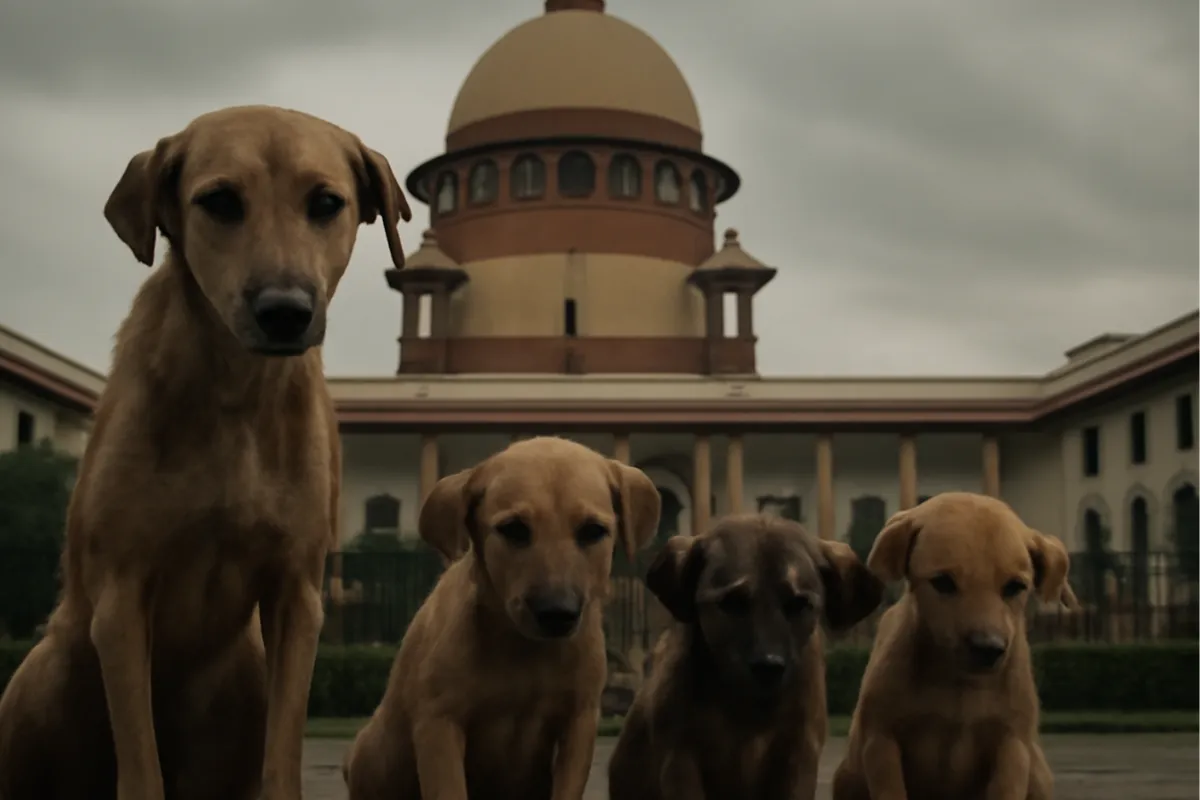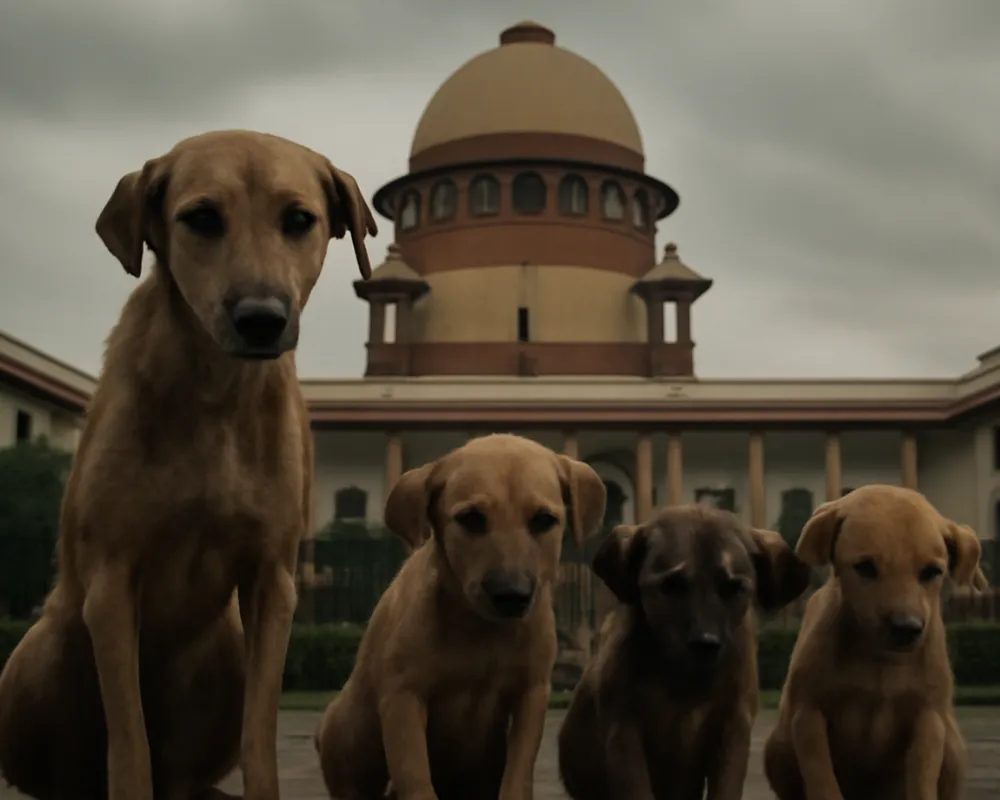In a significant and highly debated ruling, the Supreme Court of India has issued a directive that has sent shockwaves through both animal welfare circles and civic authorities. Addressing the long-standing issue of the stray dog menace, the Court has ordered a complete and time-bound removal of all stray dogs from the streets of the Delhi-National Capital Region (NCR). This order directly challenges the long-standing Animal Birth Control (ABC) Rules, 2023, which mandate the sterilization and release of strays back into their original habitats. The verdict, which has been described by the Court as a measure to prioritize public safety, has sparked a heated debate on human rights versus animal welfare.
The Verdict: A Clear and Unambiguous Directive
Acting on a suo motu case initiated in response to alarming reports of dog bites and rabies deaths, the bench of Justices J.B. Pardiwala and R. Mahadevan passed a series of stringent directions on August 11. The key takeaways from the verdict are as follows:
- Removal and Relocation: The Court has mandated that all stray dogs from Delhi, Ghaziabad, Noida, Faridabad, and Gurugram be picked up and relocated to designated shelters. This process is to begin immediately and be completed within eight weeks.
- No Release Back on Streets: The most controversial aspect of the ruling is the explicit prohibition on releasing dogs back onto the streets, colonies, or public places, a practice that is a core tenet of the existing ABC Rules.
- Creation of Shelters: The Court has directed authorities to create an initial capacity for at least 5,000 dogs within the eight-week period. These shelters must be equipped with sufficient personnel for sterilization, immunization, and general care, with CCTV cameras to ensure humane treatment.
- Action Against Obstruction: In a stern warning, the Court declared that any individual or organization obstructing the authorities in this drive will face strict contempt of court proceedings.
The Court has since clarified its position in a detailed written order, emphasizing that the directive is in the interest of both humans and animals, and that "coexistence should not mean one life existing at the cost of another."
The Conflict with Existing Law
The Supreme Court's verdict has created a legal conundrum for civic authorities, as it appears to be in direct conflict with the Animal Birth Control (Dogs) Rules, 2023. These rules, framed under the Prevention of Cruelty to Animals Act, 1960, advocate a humane, scientific approach to population control through sterilization and vaccination. The principle behind these rules is that removing dogs from their territories can create a "vacuum effect," allowing new, unsterilized, and more aggressive dogs to move in, potentially worsening the problem.
Animal welfare organizations and activists, including former Union Minister Maneka Gandhi, have labeled the order as "unworkable," "impractical," and "legally unsound." They argue that the sheer number of stray dogs in Delhi-NCR (estimated at over 10 lakh) makes the creation of sufficient shelters an impossible task. They also warn of potential health risks, as shelters could become breeding grounds for diseases.
The Larger Debate: Public Safety vs. Compassion
The Supreme Court's judgment stems from a growing public cry for a solution to the stray dog menace. The Court noted that a life of dignity, enshrined under Article 21 of the Constitution, should not be compromised by the fear of dog bites, especially for vulnerable groups like children, the elderly, and the visually impaired. Statistics presented to the Court revealed a staggering number of dog bite cases, highlighting the gravity of the situation.
The Court's reference to "virtue signalling" by some stakeholders has also ignited a debate on the responsibility of individuals who advocate for strays without taking direct responsibility for their care. The bench urged genuine animal lovers to volunteer in shelters and assist authorities in their mission. This judgment represents a clear judicial pivot towards a more human-centric approach, while still calling for humane treatment of the animals in shelters.
Conclusion: The Supreme Court's verdict on stray dogs marks a significant turning point in a decades-long debate. By prioritizing public safety and demanding a definitive solution, the Court has challenged the traditional approach of the Animal Birth Control Rules. While the ruling has been met with skepticism and legal challenges, it has forced a long-overdue conversation about the responsibilities of municipalities and the balance between human rights and animal welfare. The coming weeks will be crucial as authorities scramble to implement the order, setting a precedent that could have far-reaching implications for cities across India.







Leave a Reply